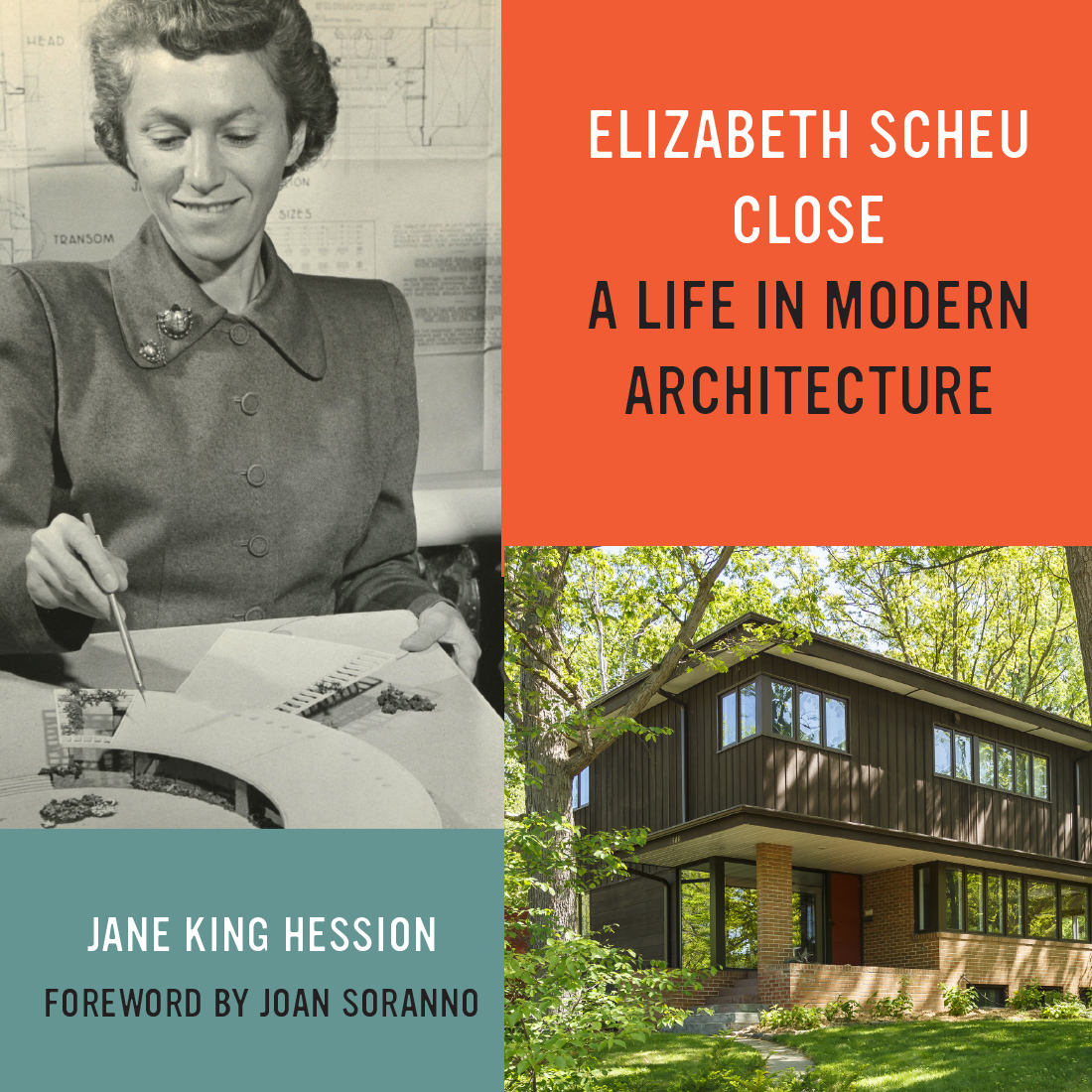
Elizabeth “Lisl” Scheu Close (1912-2011) was Minnesota’s first modern architect and the designer of more than 250 buildings in the state. She was in the vanguard of professionally-trained women architects nationally and internationally. Her sixty-year career was shaped by the artistic, political, social, and economic upheavals of the twentieth century.
Exhibition Details
Elizabeth Scheu Close: A Life in Modern Architecture
- February 1–September 27, 2020
- HGA Gallery
Elizabeth “Lisl” Scheu Close (1912-2011) was Minnesota’s first modern architect and the designer of more than 250 buildings in the state. She was in the vanguard of professionally-trained women architects nationally and internationally. Her sixty-year career was shaped by the artistic, political, social, and economic upheavals of the twentieth century.
Lisl was born in Vienna, Austria, and raised in a seminal, early modern house designed for her family in 1912 by iconoclastic architect Adolf Loos. The experience of living in the house led to her choice of career. Her own designs were deeply rooted in the principles and aesthetics of Austrian modernism, as well as those of the International Style.
In 1938, with her husband Winston Close, she cofounded the first practice in Minnesota dedicated to modern architecture—a style that was not widely adopted by the public or profession at the time. Modernism, to Lisl, meant the design of buildings that “fit the modern style of living,” or those that were practical, efficient, durable, and of their time. Her work was primarily residential and included a series of prefabricated houses for the Page & Hill Company of Minnesota. Over 10,000 houses were produced from her plans. During the Cold War, one traveled behind the Iron Curtain to Berlin where it was promoted by the US State Department as the “typical American house.
Lisl attained several “firsts” during her long life and she remains a role model for women in the profession today. But she disliked being described as a “woman architect,” preferring “an architect who happens to be a woman.” She believed her talents and accomplishments as an architect needed neither embellishment nor qualification because of her sex.
The book, Elizabeth Scheu Close: A Life in Modern Architecture by Jane King Hession, can be purchased online at University of Minnesota Press.



